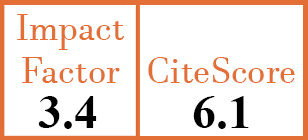Brief Papers
Which joints and why do rheumatologists scan in rheumatoid arthritis by ultrasonography? A real life experience
S.Z. Aydin1, S. Pay2, N. Inanc3, S. Kamali4, O. Karadag5, P. Emery6, M.-A. D'agostino7
- Rheumatology Division, University of Ottawa, Ontario, Canada. drsibelaydin@gmail.com
- Rheumatology Division, Gulhane Military Medical Academy, Ankara, Turkey.
- Rheumatology Division, Marmara University Faculty of Medicine, Istanbul, Turkey.
- Rheumatology Division, Istanbul University, Istanbul Faculty of Medicine, Turkey.
- Rheumatology Division, Hacettepe University Faculty of Medicine, Ankara, Turkey.
- Leeds Musculoskeletal Biomedical Research Unit, Leeds, UK.
- Rheumatology Department, Université Versailles Saint-Quentin en Yvelines, Paris, France.
on behalf of the Targeted Ultrasound Initiative (TUI) Steering Committee
CER9606
2017 Vol.35, N°3
PI 0508, PF 0511
Brief Papers
Free to view
(click on article PDF icon to read the article)
PMID: 28094757 [PubMed]
Received: 25/05/2016
Accepted : 29/09/2016
In Press: 15/01/2017
Published: 07/06/2017
Abstract
OBJECTIVES:
Ultrasonography (US) has been demonstrated to improve assessment of synovitis and disease activity in rheumatoid arthritis (RA). However, the utility and feasibility of US in RA in clinical practice in real life is not known. We aimed to investigate: i) the indications for performing US in RA in daily practice; and ii) whether the number of scanned joints varies according to the purpose.
METHODS:
Consecutive patients who had a US scan either for diagnosis or follow-up for RA from 5 centres were recruited. The sonographers were asked to mark the joints that had a US scan and grade their findings. Descriptive analysis was applied to find out the sites and the number of joints scanned and compared according to the indications of US.
RESULTS:
Two hundred consecutive patients were recruited. The most common indication was assessing disease activity (48.5%) followed by diagnosis (45.5 %). Wrists (66%) and MCPs (63.5) were the most frequently scanned joints followed by knees (26%), PIPs (20%). The number of joints scanned by US was significantly higher when performed for diagnostic purposes as compared to assessing disease activity and guidance for injections (p=0.001).
CONCLUSIONS:
The current data highlight differences between the numbers of joints for which that the clinician feels necessary to perform US in real life. This observation may be a guide when providing recommendations regarding which joints need to be scanned according to the indication.


